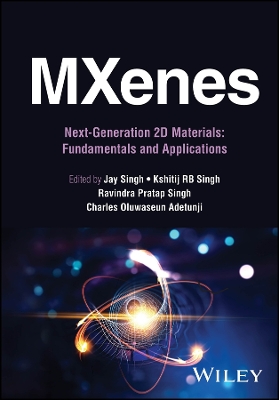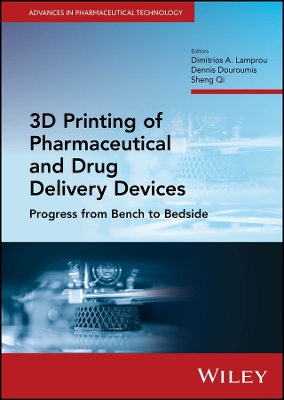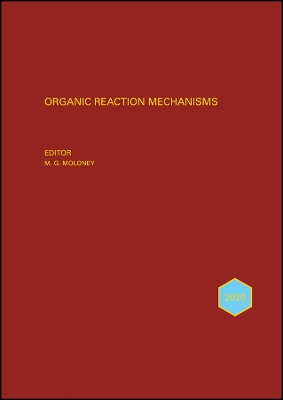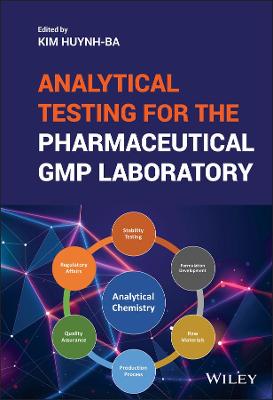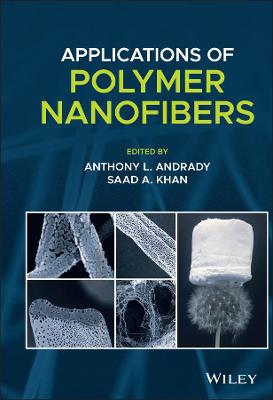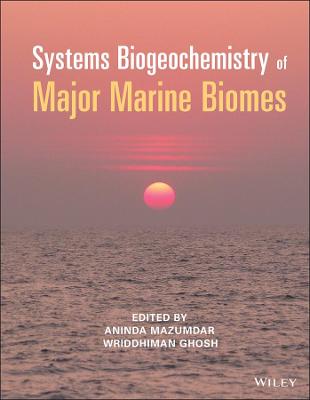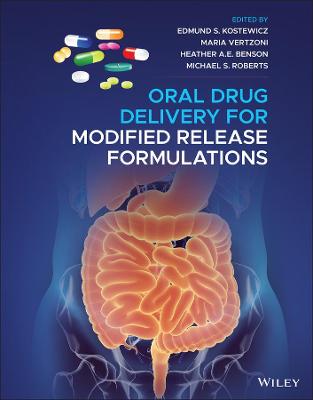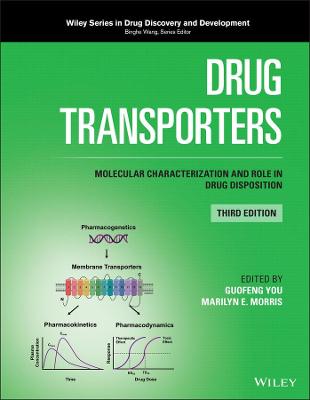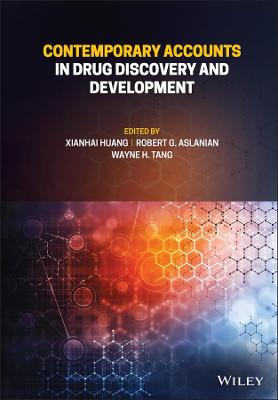Elements of Molecular and Biomolecular Electrochemistry
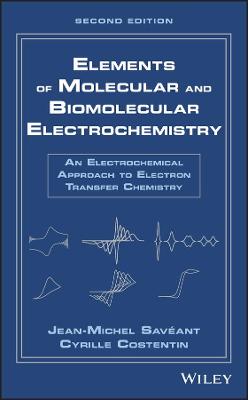 -15%
portes grátis
-15%
portes grátis
Elements of Molecular and Biomolecular Electrochemistry
An Electrochemical Approach to Electron Transfer Chemistry
Saveant, Jean-Michel; Costentin, Cyrille
John Wiley & Sons Inc
07/2019
640
Dura
Inglês
9781119292333
15 a 20 dias
1160
1 Single-Electron Transfer at an Electrode 1
1.1 Introduction 1
1.2 Cyclic Voltammetry of Fast Electron Transfers: Nernstian Waves 2
1.2.1 One-Electron Transfer to Molecules Attached to the Electrode Surface 2
1.2.2 One-Electron Transfer to Free-moving Molecules 6
1.3 Technical Aspects 10
1.3.1 The Cyclic Voltammetry Experiment - Faradaic and Double-Layer Charging Currents. Ohmic Drop 10
1.3.2 Other Techniques. Convolution 21
1.4 Electron Transfer Kinetics 29
1.4.1 Introduction 29
1.4.2 Butler-Volmer Law and Marcus-Hush-Levich (MHL) Model 31
1.4.3 Extraction of Electron Transfer Kinetics from Cyclic Voltammetric Signals. Comparison with Other Techniques 46
1.4.4 Experimental Testing of the Electron Transfer Models 59
1.5 Successive One-Electron Transfers vs. Two-Electron Transfers 64
1.5.1 Introduction 64
1.5.2 Cyclic Voltammetric Responses: Convolution 66
1.5.3 Response of Molecules Containing Identical and Independent Reducible or Oxidizable Groups 72
1.5.4 An Example of the Predominating Role of Solvation: The Oxidoreduction of Carotenoids 72
1.5.5 An Example of the Predominating Role of Structural Changes: The Reduction of trans-2,3-Dinitro-2-butene 75
References 77
2 Coupling of Electrode Electron Transfers with Homogeneous Chemical Reactions 81
2.1 Introduction 81
2.2 Establishing the Mechanism and Measuring the Rate Constants for Homogeneous Reactions by Means of Cyclic Voltammetry and Potential Step Chronoamperometry 83
2.2.1 The EC Mechanism 83
2.2.2 The CE Mechanism 97
2.2.3 The Square Scheme Mechanism 99
2.2.4 The ECE and DISP Mechanisms 100
2.2.5 Electrodimerization 107
2.2.6 Homogeneous Catalytic Reaction Schemes 113
2.2.6.1 Homogeneous Electron Transfer as the Rate-Determining Step 114
2.2.6.2 Homogeneous Catalytic EC Mechanism 117
2.2.6.3 Deactivation of the Mediator 120
2.2.7 Electrodes as Catalysts: Electron-transfer Catalyzed Reactions 122
2.2.8 Numerical Computations: Simulations, Diagnostic Criteria, Working Curves 125
2.3 Product Distribution in Preparative Electrolysis 129
2.3.1 Introduction 129
2.3.2 General Features 130
2.3.3 Product Distribution Resulting from Competition Between Follow-Up Reactions 133
2.3.4 The ECE-DISP Competition 135
2.3.5 Other Reactions Schemes 136
2.4 Classification and Examples of Electron-Transfer Coupled Chemical Reactions 137
2.4.1 Coupling of Single Electron Transfer with Acid-Base Reactions 137
2.4.2 Electrodimerization 146
2.4.3 Electropolymerization 150
2.4.4 Reduction of Carbon Dioxide 151
2.4.5 H-Atom Transfer vs. Electron + Proton Transfer 153
2.4.6 The SRN1 Substitution: Electrodes and Electrons as Catalysts 157
2.4.7 Conformational Changes, Isomerization and Electron Transfer 162
2.5 Redox Properties of Transient Radicals 167
2.5.1 Introduction 167
2.5.2 The Direct Electrochemical Approach 167
2.5.3 Laser Flash Electron Injection 172
2.5.4 Photomodulation Voltammetry 176
2.6 Electrochemistry as a Trigger for Radical Chemistry or for Ionic Chemistry 177
References 179
3 Coupling Between Electron Transfer and Heavy Atom-Bond Breaking and Formation 183
3.1 Introduction 183
3.2 Dissociative Electron Transfer 185
3.2.1 Thermodynamics: Microscopic Reversibility 185
3.2.2 The Morse Curve Model 188
3.2.3 Values of the Symmetry Factor and Variation with the Driving Force 193
3.2.4 Entropy of Activation 195
3.3 Interactions Between Fragments in the Product Cluster 196
3.3.1 Influence on the Dynamics of Dissociative Electron Transfers 197
3.3.2 A Typical Example: Dissociative Electron Transfer to Carbon Tetrachloride 198
3.3.3 Stabilities of Ion-radical Adducts as a Function of the Solvent 201
3.3.4 Dependency of In-cage Ion-radical Interactions on the Leaving Group 203
3.4 Stepwise vs. Concerted Mechanisms 205
3.4.1 Introduction 205
3.4.2 Diagnostic Criteria 206
3.4.3 How Molecular Structure Controls the Mechanism? 208
3.4.4 Passage from One Mechanism to the Other Upon Changing the Driving Force 212
3.4.5 Photoinduced vs. Thermal Processes 217
3.4.6 Does Concerted Mechanism Mean that the Intermediate "Does Not Exist"? 219
3.4.7 ? and 𝜎 Ion Radicals: Competition Between Reaction Pathways 220
3.5 Cleavage of Ion Radicals: Reaction of Radicals with Nucleophiles 221
3.5.1 Introduction 221
3.5.2 Heterolytic Cleavages: Coupling of Radicals with Nucleophiles 222
3.5.3 Homolytic Cleavages 230
3.6 Role of Solvent in Ion Radical Cleavage and in Stepwise vs. Concerted Competitions 235
3.6.1 Introduction 235
3.6.2 Experimental Clues 236
3.6.3 A Simplified Model System 241
3.7 Dichotomy and Connections Between SN2 Reactions and Dissociative Electron Transfers 246
3.7.1 Introduction 246
3.7.2 Experimental Approaches 247
3.7.3 Theoretical Aspects 251
References 255
4 Proton-Coupled Electron Transfers 259
4.1 Introduction 259
4.2 Fundamentals 260
4.2.1 Concerted and Stepwise Pathways in Proton-Coupled Electron Transfer Reactions 260
4.2.2 Thermal (Electrochemical and Homogeneous) and Photoinduced Reactions 262
4.2.3 Modeling Concerted Proton Electron Transfers 264
4.3 Examples 268
4.3.1 PCET in Hydrogen Bounded Systems: H-bond Relays 268
4.3.2 PCET in Water 271
4.4 Breaking Bonds with Protons and Electrons 279
References 283
5 Molecular Catalysis of Electrochemical Reactions 285
5.1 Introduction 285
5.2 Homogeneous Molecular Catalysis 287
5.2.1 Contrasting Redox and Chemical Catalysis 287
5.2.2 Applications of Homogeneous Redox Catalysis to the Characterization of Short-Lived Intermediates 288
5.2.2.1 Principle and Achievements of the Method 288
5.2.2.2 Comparison with Fast Cyclic Voltammetry and Laser Flash Photolysis 291
5.2.2.3 Determination of the Standard Potential for the Formation of Very Unstable Primary Intermediates 293
5.2.2.4 Redox Catalysis of Electrocatalytic Processes 294
5.2.3 Overpotential, Turnover Frequency, Catalysts' Benchmarking, Catalytic Tafel Plots, Maximal Turnover Number 296
5.2.4 Inhibition by Intermediates and Other Secondary Phenomena. Remedies 299
5.2.5 Multi-Electron Multistep Mechanisms 301
5.2.6 Competition Between Heterolytic and Homolytic Catalytic Mechanisms 319
5.2.7 Intelligent Design of Molecular Catalysts 325
5.2.7.1 Redox vs. Chemical Catalysis: The Reduction of Vicinal Dibromides. Rates and Stereoselectivity 325
5.2.7.2 Correlation Between Catalysis Kinetics and Thermodynamics: The "Iron Law" Restraining Through-Structure Substituent Effect Within a Catalyst Family 326
5.2.7.3 Escaping the "Iron Law": Through-Space Substituent Effects 329
5.3 Supported Molecular Catalysis (Immobilized Catalysts) 332
5.3.1 Redox and Chemical Catalysis at Monolayer and Multilayer-Coated Electrodes 332
5.3.2 Catalysis at Monolayer-Coated Electrodes 333
5.3.3 Permeation Through Electrode Coatings. Inhibition 342
5.3.4 Electron Hopping Conduction in Assemblies of Redox Centers 349
5.3.5 Ohmic Conduction in Mesoporous Electrodes 352
5.3.6 Catalysis at Multilayer-Coated Electrodes 356
5.3.7 Combining an Electron-shuttling Mediator with a Chemical Catalyst in a Multilayer Electrode Coating 374
References 379
6 Enzymatic Catalysis of Electrochemical Reactions 383
6.1 Introduction 383
6.2 Homogenous Enzymatic Catalysis 384
6.2.1 Introduction 384
6.2.2 The "Ping-Pong" Mechanism. Kinetic Control by Substrate and/or Cosubstrate 385
6.2.3 A Model Example: Glucose Oxidase with Excess Glucose 392
6.2.4 Molecular Recognition of an Enzyme by Artificial One-Electron Cosubstrates 394
6.2.5 Deciphering a Complex Electroenzymatic Response: Horseradish Peroxidase 398
6.3 Immobilized Enzymes in Monomolecular Layers 402
6.3.1 Introduction 402
6.3.2 The "Ping-Pong" Mechanism with an Immobilized Enzyme and the Cosubstrate in Solution 402
6.3.3 Antigen-Antibody Immobilization of Glucose Oxidase: Kinetic Analysis 411
6.3.4 Application to the Kinetic Characterization of Biomolecular Recognition 413
6.3.5 Immobilized Horseradish Peroxidase 420
6.3.6 Immobilization of Both the Enzyme and the Cosubstrate: Electron Transfer and Electron Transport in Integrated Systems 425
6.4 Spatially Ordered Multi-monomolecular Layered Enzyme Coatings 430
6.4.1 Step-by-Step Antigen-Antibody Construction of Multi-monomolecular Layer Enzyme Coatings 430
6.4.2 Reaction Dynamics with the Cosubstrate in Solution: Evidence for Spatial Order 432
References 436
7 Appendices 439
7.1 Single-Electron Transfer at an Electrode 439
7.1.1 Laplace Transformation: Useful Definitions and Relationships 439
7.1.2 Cyclic Voltammetry of Nernstian Systems: Current- and Charge-Potential Curves 439
7.1.3 Double-Layer Charging in Cyclic Voltammetry: Oscillating and Nonoscillating Behaviors 446
7.1.4 Effect of Ohmic Drop and Double-Layer Charging on Nernstian Cyclic Voltammograms 448
7.1.5 Potential Step and Double Potential Step Chronoamperometry of Nernstian Systems 451
7.1.6 Overlapping of Double-Layer Charging and Faradaic Currents in Potential Step and Double Potential Step Chronoamperometry. Oscillating and Nonoscillating Behaviors 453
7.1.7 Solvent Reorganization in Marcus-Hush-Levich Model 455
7.1.8 Effect of the Multiplicity of Electronic States in the Electrode 460
7.1.9 Cyclic Voltammetry of Two-Electron Nernstian Systems. Disproportionation 463
7.2 Coupling of Homogeneous Chemical Reactions with Electron Transfer 465
7.2.1 The EC Mechanism 465
7.2.2 The CE Mechanism 471
7.2.3 Double Potential Step Responses for Processes Involving First- or Second-Order Follow-Up Reactions 474
7.2.4 The ECE and DISP Mechanisms 475
7.2.5 Electrodimerization 483
7.2.6 Competition Between Dimerization of and Electron Transfer to Intermediates 490
7.2.7 Homogeneous Catalysis 495
7.2.7.1 Homogeneous Electron Transfer as the Rate-Determining Step 495
7.2.7.2 Homogeneous Catalytic EC Mechanism 499
7.2.7.3 Deactivation of the Mediator 500
7.2.8 Product Distribution in Preparative Electrolysis 502
7.3 Electron Transfer, Bond Breaking, and Bond Formation 525
7.3.1 Contribution of the Cleaving Bond Stretching to Internal Reorganization of the First Step of the Stepwise Mechanism 525
7.3.2 Morse Curve Model of Intramolecular Dissociative Electron Transfer 526
7.4 Proton-Coupled Electron Transfers 528
7.4.1 Rate Law for Electrochemical CPET 528
7.4.2 Current-Potential Relationship for PCET in Water 533
7.4.3 Competition Between Dimerization and CPET Kinetics 538
7.5 Analysis of Supported Molecular Catalysis by Rotating Disk Electrode Voltammetry and Cyclic Voltammetry 541
7.5.1 Catalysis at Monolayer Electrode Coatings 541
7.5.2 Inhibition of Electron Transfer at Partially Blocked Electrodes 544
7.5.3 Equivalent Diffusion and Migration Laws for Electron Hopping Between Fixed Sites 545
7.5.4 Ohmic Conduction in Mesoporous Electrodes 547
7.5.5 Catalysis at Multilayered Electrode Coatings: RDVE 556
7.5.6 Ohmic Transport in Electrocatalytic Film 562
7.5.6.1 Governing Equations 562
7.5.6.2 Dimensionless Formulation 563
7.5.6.3 Semianalytical Resolution 564
7.5.6.4 Asymptotes of the Catalytic Tafel Plots for E ? +/-? 567
7.5.7 Catalysis at Multilayered Electrode Coatings: Cyclic Voltammetry 568
7.5.7.1 Formulation 568
7.5.7.2 Resolution in the Absence of Substrate Consumption 569
7.5.7.3 Resolution in Pure Kinetics Conditions (Fast Kinetics) with Possible Substrate Consumption 571
7.5.7.4 Resolution in Fast-conducting Conditions with Possible Substrate Consumption 577
7.6 Enzymatic Catalysis Responses 580
7.6.1 The "Ping-Pong" Mechanism in Homogeneous Enzymatic Catalysis 580
7.6.2 Catalysis and Inhibition in Homogeneous Systems 585
7.6.2.1 Derivation of Eq. (6.10) 585
7.6.2.2 Control by Substrate Diffusion 589
7.6.3 Catalysis at Multilayered Electrode Coatings 591
References 597
Glossary of Symbols 599
Index 611
1 Single-Electron Transfer at an Electrode 1
1.1 Introduction 1
1.2 Cyclic Voltammetry of Fast Electron Transfers: Nernstian Waves 2
1.2.1 One-Electron Transfer to Molecules Attached to the Electrode Surface 2
1.2.2 One-Electron Transfer to Free-moving Molecules 6
1.3 Technical Aspects 10
1.3.1 The Cyclic Voltammetry Experiment - Faradaic and Double-Layer Charging Currents. Ohmic Drop 10
1.3.2 Other Techniques. Convolution 21
1.4 Electron Transfer Kinetics 29
1.4.1 Introduction 29
1.4.2 Butler-Volmer Law and Marcus-Hush-Levich (MHL) Model 31
1.4.3 Extraction of Electron Transfer Kinetics from Cyclic Voltammetric Signals. Comparison with Other Techniques 46
1.4.4 Experimental Testing of the Electron Transfer Models 59
1.5 Successive One-Electron Transfers vs. Two-Electron Transfers 64
1.5.1 Introduction 64
1.5.2 Cyclic Voltammetric Responses: Convolution 66
1.5.3 Response of Molecules Containing Identical and Independent Reducible or Oxidizable Groups 72
1.5.4 An Example of the Predominating Role of Solvation: The Oxidoreduction of Carotenoids 72
1.5.5 An Example of the Predominating Role of Structural Changes: The Reduction of trans-2,3-Dinitro-2-butene 75
References 77
2 Coupling of Electrode Electron Transfers with Homogeneous Chemical Reactions 81
2.1 Introduction 81
2.2 Establishing the Mechanism and Measuring the Rate Constants for Homogeneous Reactions by Means of Cyclic Voltammetry and Potential Step Chronoamperometry 83
2.2.1 The EC Mechanism 83
2.2.2 The CE Mechanism 97
2.2.3 The Square Scheme Mechanism 99
2.2.4 The ECE and DISP Mechanisms 100
2.2.5 Electrodimerization 107
2.2.6 Homogeneous Catalytic Reaction Schemes 113
2.2.6.1 Homogeneous Electron Transfer as the Rate-Determining Step 114
2.2.6.2 Homogeneous Catalytic EC Mechanism 117
2.2.6.3 Deactivation of the Mediator 120
2.2.7 Electrodes as Catalysts: Electron-transfer Catalyzed Reactions 122
2.2.8 Numerical Computations: Simulations, Diagnostic Criteria, Working Curves 125
2.3 Product Distribution in Preparative Electrolysis 129
2.3.1 Introduction 129
2.3.2 General Features 130
2.3.3 Product Distribution Resulting from Competition Between Follow-Up Reactions 133
2.3.4 The ECE-DISP Competition 135
2.3.5 Other Reactions Schemes 136
2.4 Classification and Examples of Electron-Transfer Coupled Chemical Reactions 137
2.4.1 Coupling of Single Electron Transfer with Acid-Base Reactions 137
2.4.2 Electrodimerization 146
2.4.3 Electropolymerization 150
2.4.4 Reduction of Carbon Dioxide 151
2.4.5 H-Atom Transfer vs. Electron + Proton Transfer 153
2.4.6 The SRN1 Substitution: Electrodes and Electrons as Catalysts 157
2.4.7 Conformational Changes, Isomerization and Electron Transfer 162
2.5 Redox Properties of Transient Radicals 167
2.5.1 Introduction 167
2.5.2 The Direct Electrochemical Approach 167
2.5.3 Laser Flash Electron Injection 172
2.5.4 Photomodulation Voltammetry 176
2.6 Electrochemistry as a Trigger for Radical Chemistry or for Ionic Chemistry 177
References 179
3 Coupling Between Electron Transfer and Heavy Atom-Bond Breaking and Formation 183
3.1 Introduction 183
3.2 Dissociative Electron Transfer 185
3.2.1 Thermodynamics: Microscopic Reversibility 185
3.2.2 The Morse Curve Model 188
3.2.3 Values of the Symmetry Factor and Variation with the Driving Force 193
3.2.4 Entropy of Activation 195
3.3 Interactions Between Fragments in the Product Cluster 196
3.3.1 Influence on the Dynamics of Dissociative Electron Transfers 197
3.3.2 A Typical Example: Dissociative Electron Transfer to Carbon Tetrachloride 198
3.3.3 Stabilities of Ion-radical Adducts as a Function of the Solvent 201
3.3.4 Dependency of In-cage Ion-radical Interactions on the Leaving Group 203
3.4 Stepwise vs. Concerted Mechanisms 205
3.4.1 Introduction 205
3.4.2 Diagnostic Criteria 206
3.4.3 How Molecular Structure Controls the Mechanism? 208
3.4.4 Passage from One Mechanism to the Other Upon Changing the Driving Force 212
3.4.5 Photoinduced vs. Thermal Processes 217
3.4.6 Does Concerted Mechanism Mean that the Intermediate "Does Not Exist"? 219
3.4.7 ? and 𝜎 Ion Radicals: Competition Between Reaction Pathways 220
3.5 Cleavage of Ion Radicals: Reaction of Radicals with Nucleophiles 221
3.5.1 Introduction 221
3.5.2 Heterolytic Cleavages: Coupling of Radicals with Nucleophiles 222
3.5.3 Homolytic Cleavages 230
3.6 Role of Solvent in Ion Radical Cleavage and in Stepwise vs. Concerted Competitions 235
3.6.1 Introduction 235
3.6.2 Experimental Clues 236
3.6.3 A Simplified Model System 241
3.7 Dichotomy and Connections Between SN2 Reactions and Dissociative Electron Transfers 246
3.7.1 Introduction 246
3.7.2 Experimental Approaches 247
3.7.3 Theoretical Aspects 251
References 255
4 Proton-Coupled Electron Transfers 259
4.1 Introduction 259
4.2 Fundamentals 260
4.2.1 Concerted and Stepwise Pathways in Proton-Coupled Electron Transfer Reactions 260
4.2.2 Thermal (Electrochemical and Homogeneous) and Photoinduced Reactions 262
4.2.3 Modeling Concerted Proton Electron Transfers 264
4.3 Examples 268
4.3.1 PCET in Hydrogen Bounded Systems: H-bond Relays 268
4.3.2 PCET in Water 271
4.4 Breaking Bonds with Protons and Electrons 279
References 283
5 Molecular Catalysis of Electrochemical Reactions 285
5.1 Introduction 285
5.2 Homogeneous Molecular Catalysis 287
5.2.1 Contrasting Redox and Chemical Catalysis 287
5.2.2 Applications of Homogeneous Redox Catalysis to the Characterization of Short-Lived Intermediates 288
5.2.2.1 Principle and Achievements of the Method 288
5.2.2.2 Comparison with Fast Cyclic Voltammetry and Laser Flash Photolysis 291
5.2.2.3 Determination of the Standard Potential for the Formation of Very Unstable Primary Intermediates 293
5.2.2.4 Redox Catalysis of Electrocatalytic Processes 294
5.2.3 Overpotential, Turnover Frequency, Catalysts' Benchmarking, Catalytic Tafel Plots, Maximal Turnover Number 296
5.2.4 Inhibition by Intermediates and Other Secondary Phenomena. Remedies 299
5.2.5 Multi-Electron Multistep Mechanisms 301
5.2.6 Competition Between Heterolytic and Homolytic Catalytic Mechanisms 319
5.2.7 Intelligent Design of Molecular Catalysts 325
5.2.7.1 Redox vs. Chemical Catalysis: The Reduction of Vicinal Dibromides. Rates and Stereoselectivity 325
5.2.7.2 Correlation Between Catalysis Kinetics and Thermodynamics: The "Iron Law" Restraining Through-Structure Substituent Effect Within a Catalyst Family 326
5.2.7.3 Escaping the "Iron Law": Through-Space Substituent Effects 329
5.3 Supported Molecular Catalysis (Immobilized Catalysts) 332
5.3.1 Redox and Chemical Catalysis at Monolayer and Multilayer-Coated Electrodes 332
5.3.2 Catalysis at Monolayer-Coated Electrodes 333
5.3.3 Permeation Through Electrode Coatings. Inhibition 342
5.3.4 Electron Hopping Conduction in Assemblies of Redox Centers 349
5.3.5 Ohmic Conduction in Mesoporous Electrodes 352
5.3.6 Catalysis at Multilayer-Coated Electrodes 356
5.3.7 Combining an Electron-shuttling Mediator with a Chemical Catalyst in a Multilayer Electrode Coating 374
References 379
6 Enzymatic Catalysis of Electrochemical Reactions 383
6.1 Introduction 383
6.2 Homogenous Enzymatic Catalysis 384
6.2.1 Introduction 384
6.2.2 The "Ping-Pong" Mechanism. Kinetic Control by Substrate and/or Cosubstrate 385
6.2.3 A Model Example: Glucose Oxidase with Excess Glucose 392
6.2.4 Molecular Recognition of an Enzyme by Artificial One-Electron Cosubstrates 394
6.2.5 Deciphering a Complex Electroenzymatic Response: Horseradish Peroxidase 398
6.3 Immobilized Enzymes in Monomolecular Layers 402
6.3.1 Introduction 402
6.3.2 The "Ping-Pong" Mechanism with an Immobilized Enzyme and the Cosubstrate in Solution 402
6.3.3 Antigen-Antibody Immobilization of Glucose Oxidase: Kinetic Analysis 411
6.3.4 Application to the Kinetic Characterization of Biomolecular Recognition 413
6.3.5 Immobilized Horseradish Peroxidase 420
6.3.6 Immobilization of Both the Enzyme and the Cosubstrate: Electron Transfer and Electron Transport in Integrated Systems 425
6.4 Spatially Ordered Multi-monomolecular Layered Enzyme Coatings 430
6.4.1 Step-by-Step Antigen-Antibody Construction of Multi-monomolecular Layer Enzyme Coatings 430
6.4.2 Reaction Dynamics with the Cosubstrate in Solution: Evidence for Spatial Order 432
References 436
7 Appendices 439
7.1 Single-Electron Transfer at an Electrode 439
7.1.1 Laplace Transformation: Useful Definitions and Relationships 439
7.1.2 Cyclic Voltammetry of Nernstian Systems: Current- and Charge-Potential Curves 439
7.1.3 Double-Layer Charging in Cyclic Voltammetry: Oscillating and Nonoscillating Behaviors 446
7.1.4 Effect of Ohmic Drop and Double-Layer Charging on Nernstian Cyclic Voltammograms 448
7.1.5 Potential Step and Double Potential Step Chronoamperometry of Nernstian Systems 451
7.1.6 Overlapping of Double-Layer Charging and Faradaic Currents in Potential Step and Double Potential Step Chronoamperometry. Oscillating and Nonoscillating Behaviors 453
7.1.7 Solvent Reorganization in Marcus-Hush-Levich Model 455
7.1.8 Effect of the Multiplicity of Electronic States in the Electrode 460
7.1.9 Cyclic Voltammetry of Two-Electron Nernstian Systems. Disproportionation 463
7.2 Coupling of Homogeneous Chemical Reactions with Electron Transfer 465
7.2.1 The EC Mechanism 465
7.2.2 The CE Mechanism 471
7.2.3 Double Potential Step Responses for Processes Involving First- or Second-Order Follow-Up Reactions 474
7.2.4 The ECE and DISP Mechanisms 475
7.2.5 Electrodimerization 483
7.2.6 Competition Between Dimerization of and Electron Transfer to Intermediates 490
7.2.7 Homogeneous Catalysis 495
7.2.7.1 Homogeneous Electron Transfer as the Rate-Determining Step 495
7.2.7.2 Homogeneous Catalytic EC Mechanism 499
7.2.7.3 Deactivation of the Mediator 500
7.2.8 Product Distribution in Preparative Electrolysis 502
7.3 Electron Transfer, Bond Breaking, and Bond Formation 525
7.3.1 Contribution of the Cleaving Bond Stretching to Internal Reorganization of the First Step of the Stepwise Mechanism 525
7.3.2 Morse Curve Model of Intramolecular Dissociative Electron Transfer 526
7.4 Proton-Coupled Electron Transfers 528
7.4.1 Rate Law for Electrochemical CPET 528
7.4.2 Current-Potential Relationship for PCET in Water 533
7.4.3 Competition Between Dimerization and CPET Kinetics 538
7.5 Analysis of Supported Molecular Catalysis by Rotating Disk Electrode Voltammetry and Cyclic Voltammetry 541
7.5.1 Catalysis at Monolayer Electrode Coatings 541
7.5.2 Inhibition of Electron Transfer at Partially Blocked Electrodes 544
7.5.3 Equivalent Diffusion and Migration Laws for Electron Hopping Between Fixed Sites 545
7.5.4 Ohmic Conduction in Mesoporous Electrodes 547
7.5.5 Catalysis at Multilayered Electrode Coatings: RDVE 556
7.5.6 Ohmic Transport in Electrocatalytic Film 562
7.5.6.1 Governing Equations 562
7.5.6.2 Dimensionless Formulation 563
7.5.6.3 Semianalytical Resolution 564
7.5.6.4 Asymptotes of the Catalytic Tafel Plots for E ? +/-? 567
7.5.7 Catalysis at Multilayered Electrode Coatings: Cyclic Voltammetry 568
7.5.7.1 Formulation 568
7.5.7.2 Resolution in the Absence of Substrate Consumption 569
7.5.7.3 Resolution in Pure Kinetics Conditions (Fast Kinetics) with Possible Substrate Consumption 571
7.5.7.4 Resolution in Fast-conducting Conditions with Possible Substrate Consumption 577
7.6 Enzymatic Catalysis Responses 580
7.6.1 The "Ping-Pong" Mechanism in Homogeneous Enzymatic Catalysis 580
7.6.2 Catalysis and Inhibition in Homogeneous Systems 585
7.6.2.1 Derivation of Eq. (6.10) 585
7.6.2.2 Control by Substrate Diffusion 589
7.6.3 Catalysis at Multilayered Electrode Coatings 591
References 597
Glossary of Symbols 599
Index 611

